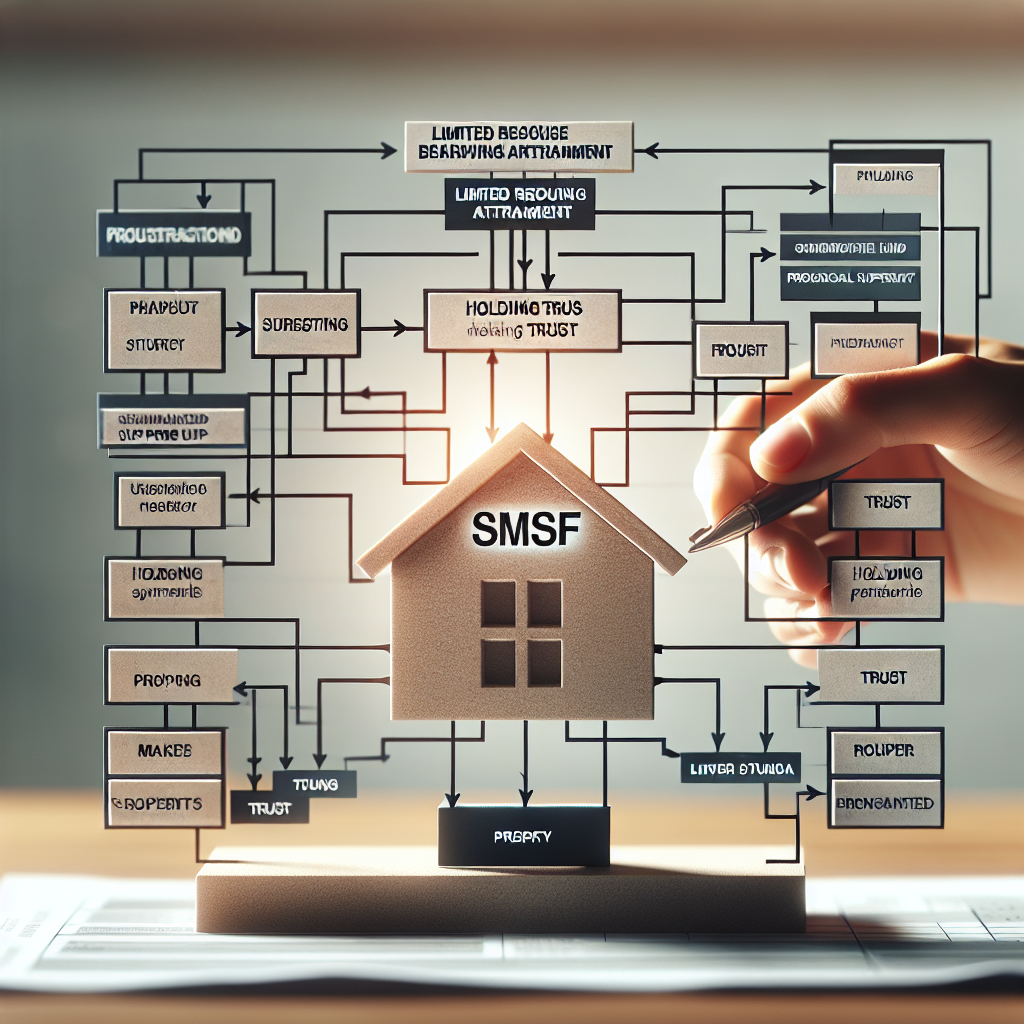Picture this: John, a diligent SMSF trustee, sits at his kitchen table surrounded by financial brochures, calculator in one hand, coffee in the other. His brow furrowed as he mutters, “To fix or not to fix, that is the question.” While Shakespeare probably wasn’t contemplating SMSF home loan interest rates, John certainly is – and he’s not alone in this modern financial dilemma.
Choosing between fixed and variable interest rates for your SMSF property investment is a bit like deciding whether to pack an umbrella for a week-long vacation. Sure, the weather forecast looks sunny now, but what about next Tuesday? Will you be thanking yourself for the foresight or lugging around unnecessary baggage?
For thousands of SMSF trustees and property investors across Australia, this decision isn’t just a fleeting thought – it’s potentially a difference of thousands of dollars in their retirement nest egg. And let’s be honest, who couldn’t use a few extra thousand dollars for those golden years? Perhaps for that cruise you’ve been eyeing, or maybe just for the luxury of not eating baked beans every night.
Fixed vs Variable: Like Choosing Between Pizza Toppings… But More Expensive
The choice between fixed and variable rates isn’t just financial—it’s about your comfort with uncertainty and your long-term investment strategy.
Let’s break down these SMSF home loan interest rates in terms we can all understand. Think of fixed rates as the pepperoni pizza of the mortgage world – classic, predictable, and you know exactly what you’re getting for the next few years. Your rate is locked in, giving you the financial equivalent of a warm, comforting hug.
Variable rates, on the other hand, are more like a “chef’s special” pizza. It might be amazing and save you money, or you might end up with something unexpected – perhaps delightful, perhaps causing financial heartburn. The rate fluctuates with the market, meaning your payments could go up or down depending on which way the economic winds blow.
Currently, SMSF home loan interest rates for fixed options hover around 5.29% (with comparison rates at approximately 5.85%), while variable rates sit at about 5.59% (with comparison rates around 6.15%). That seemingly small difference of 0.30% might not sound like much – kind of like choosing between a large or extra-large coffee – but when we’re talking about loans often exceeding $500,000, that tiny percentage can translate to thousands of dollars over the life of your loan.
“I went variable with my SMSF loan last year,” shares Rachel, a property investor from Sydney. “It felt like I was playing financial roulette every month when the RBA met. My mortgage broker actually started sending me ‘good luck’ texts before each announcement!”
But here’s where it gets interesting (or terrifying, depending on your perspective): A 0.30% difference on a $500,000 SMSF loan equals about $1,500 per year. Over a 10-year period, that’s $15,000 – enough for a decent used car or 3,750 cups of coffee (not that I’m counting).
Shopping for SMSF Lenders: It’s Like Finding the Perfect Pair of Shoes, But Less Fun
Remember the thrill of finding your favorite item on sale at the mall? Shopping for SMSF lenders should give you that same excitement, minus the flattering changing room lighting. Unfortunately, the SMSF lending market isn’t as crowded as it once was, with many lenders having packed up their financial mannequins and closed shop.
But don’t despair! There are still solid options like Firstmac offering both fixed and variable SMSF loans, and Liberty Financial providing competitive interest-only options. The key is to shop around as though you’re hunting for the last discounted air fryer on Black Friday – with determination and perhaps a slight hint of desperation.
When taking out an SMSF home loan, you’ll be using a Limited Recourse Borrowing Arrangement (LRBA) – which is basically the financial world’s way of saying, “If everything goes horribly wrong, the lender can only take the property, not your collection of Star Wars figurines or other SMSF assets.” It’s like having a financial safety net, but one that hopefully you’ll never need to use.
“I spent three weeks comparing SMSF home loan interest rates,” admits Michael, a Brisbane-based SMSF trustee. “My family thought I’d joined some kind of financial cult. I had spreadsheets everywhere. Even started talking about comparison rates in my sleep, according to my wife.”
The effort is worth it though. With many lenders requiring a minimum 20% deposit for SMSF properties, you’re already committing significant funds upfront. Making the right interest rate choice is crucial – it’s like making sure you get the toppings you actually want after already paying for the pizza dough.
Assessing Your Risk Tolerance: Financial Rollercoaster or Merry-Go-Round?
Understanding your risk tolerance is crucial when selecting between fixed and variable SMSF loan options.
Let’s talk about risk tolerance – a fancy term for “how much financial uncertainty can you handle before developing an eye twitch?” Some investors love the thrill of variable rates, riding the economic ups and downs like financial daredevils. Others prefer the predictable merry-go-round of fixed rates, enjoying the scenery without the stomach-dropping plunges.
“I’m definitely a financial rollercoaster person,” laughs Sarah, who manages her SMSF with her husband. “We went with a variable rate and have saved about $7,000 over two years compared to the fixed rate we were offered. But I won’t lie – there were months I couldn’t watch the RBA announcements. I’d make my husband check and then bring me a strong drink with the news.”
When determining which SMSF home loan interest rates option is right for you, consider:
- Your sleep habits: If market fluctuations might keep you awake at night, perhaps fixed is your friend.
- Your financial buffer: Could your SMSF handle a 1-2% interest rate increase without causing cash flow issues?
- Your crystal ball skills: What’s your outlook on interest rates? (Disclaimer: actual crystal balls not proven effective for economic forecasting)
- Your investment timeline: Are you in it for the long haul or planning to sell in a few years?
Here at Aries Financial, we believe that understanding your own financial personality is as important as understanding the market. Our philosophy centers on empowering you with the knowledge to make confident decisions, rather than pressuring you into the loan product that happens to be on special this week.
“The best advice I received about SMSF home loan interest rates came from an Aries Financial consultant,” shares David, a long-term client. “They asked me to imagine how I’d feel in three different scenarios: rates going up, rates going down, or rates staying the same. My reactions told us everything we needed to know about which option suited me best.”
The Impact on Your SMSF’s Bottom Line: It’s Not Just Pennies
Let’s examine how your rate choice impacts your retirement savings with some real numbers.
Let’s crunch some real numbers to see how your choice between fixed and variable SMSF home loan interest rates could impact your retirement dreams.
Imagine two identical SMSFs each purchasing a $700,000 investment property with a $560,000 loan (80% LVR):
SMSF A chooses a fixed rate of 5.29% for five years:
- Monthly repayment (interest only): $2,468
- Total interest over 5 years: $148,080
SMSF B opts for a variable rate starting at 5.59%:
- Initial monthly repayment: $2,609
- Total interest if rates remain unchanged: $156,540
That’s a difference of $8,460 over five years – enough for a decent overseas vacation or approximately 1,692 avocado toasts (depending on your brunch venue of choice).
But here’s where it gets interesting. If variable rates drop by just 0.5% after year one and stay there, SMSF B ends up paying approximately $144,900 in total interest – actually saving $3,180 compared to the fixed option.
Conversely, if variable rates increase by 0.5% annually for three years before stabilizing, SMSF B could end up paying around $171,000 in total interest – a whopping $22,920 more than the fixed option.
“It’s like betting on the weather for your outdoor wedding,” explains Jennifer, an SMSF advisor at Aries Financial. “Fixed rates are your marquee – they cost more upfront but provide certainty. Variable rates are like taking your chances with the sky – potentially perfect, potentially requiring a last-minute scramble.”
When to Fix, When to Float: Timing Is Everything
Timing your SMSF home loan interest rates decision is a bit like trying to time the perfect comedic pause – get it right and everyone’s happy, get it wrong and you’ll be remembering that awkward moment for years to come.
Generally speaking, fixing your rate makes most sense when:
- Interest rates are historically low and likely to rise
- You need absolute certainty for cash flow planning
- Economic indicators suggest volatility ahead
- The difference between fixed and variable rates is minimal
Meanwhile, variable rates might be your best bet when:
- Interest rates are high and expected to fall
- You want flexibility to make additional repayments
- You might sell the property before a fixed term would end
- The property requires significant renovations that might lead to refinancing
At Aries Financial, we believe in the power of strategic timing rather than trying to perfectly predict the market. Our integrity-based approach means we’ll tell you honestly when we believe fixed or variable rates align better with your SMSF’s investment goals, rather than pushing whatever product offers us the best commission.
“What I appreciated most about working with Aries was their willingness to say ‘we don’t know for certain what rates will do, but here’s our educated assessment based on current conditions,'” recalls Tim, a property investor who structured his SMSF loan last year. “That honesty was refreshing in a world where everyone seems to be selling certainty.”
The Verdict: Fixed vs Variable SMSF Home Loan Interest Rates
Making the right choice between fixed and variable rates could mean thousands more dollars in your retirement fund.
So what’s the final word on this financial face-off? Like most important financial decisions, there’s no one-size-fits-all answer (despite what those late-night infomercials might claim).
Your choice between fixed and variable SMSF home loan interest rates should reflect your individual circumstances, risk tolerance, and investment strategy. It’s about finding the right financial footwear for your particular journey, not squeezing into whatever trendy option everyone else is wearing.
At Aries Financial, Australia’s Trusted SMSF Lending Specialist, we’ve seen trustees succeed with both approaches. Our expertise lies not in pushing you toward one option, but in helping you make an informed choice aligned with your SMSF’s broader strategy.
Remember John from our opening scene? After careful consideration of his options, he opted for a split loan – fixing 70% of his SMSF home loan at 5.29% while leaving 30% variable. This approach gave him the security he craved while maintaining some flexibility to benefit if rates decline.
“It’s like ordering half-pepperoni, half-supreme,” John explains with a grin. “I get predictability for most of my loan, but I’ve still got some skin in the game if rates improve. Plus, the variable portion lets me make extra repayments when my business has a good quarter.”
As you weigh your own SMSF home loan interest rates options, remember that thousands of dollars of your retirement savings hang in the balance. Take the time to shop around, understand your options, and align your choice with your long-term strategy.
And if you find yourself drowning in comparison rates and loan features, remember that Aries Financial’s team specializes in simplifying SMSF lending while maintaining the highest standards of compliance and transparency. Our commitment to integrity, expertise, and empowerment means we’re focused on helping you build wealth through strategic property investment – not just on closing another loan.
Because ultimately, the best SMSF home loan interest rates choice isn’t just about saving money today – it’s about creating the secure, prosperous retirement you deserve. And that’s no laughing matter… even if the journey there occasionally is.


